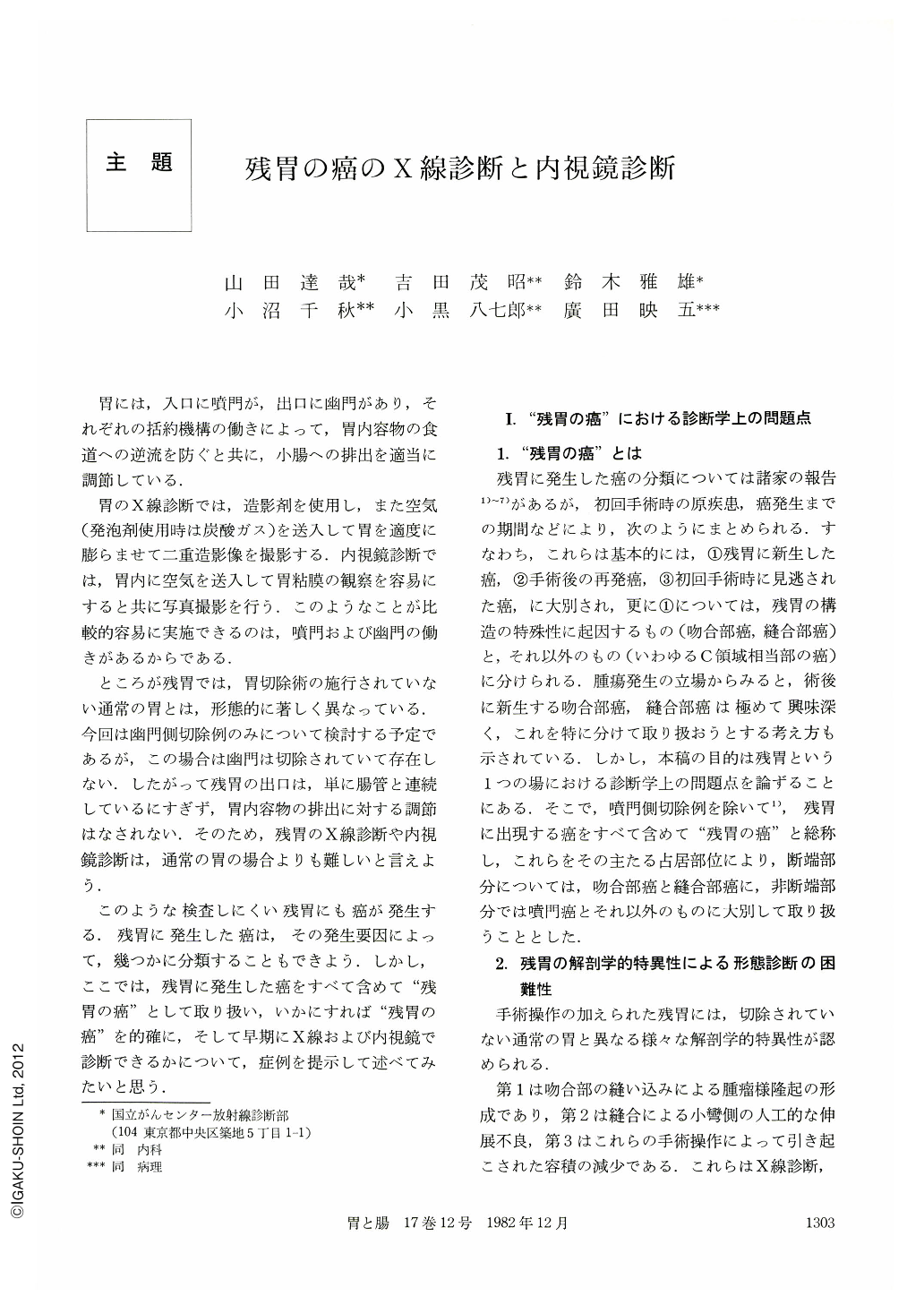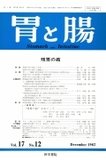Japanese
English
- 有料閲覧
- Abstract 文献概要
- 1ページ目 Look Inside
- サイト内被引用 Cited by
胃には,口に噴門が,出口に幽門があり,それぞれの括約機構の働きによって,胃内容物の食道への逆流を防ぐと共に,小腸への排出を適当に調節している.
胃のX線診断では,造影剤を使用し,また空気(発泡剤使用時は炭酸ガス)を送入して胃を適度に膨らませて二重造影像を撮影する.内視鏡診断では,胃内に空気を送入して胃粘膜の観察を容易にすると共に写真撮影を行う.このようなことが比較的容易に実施できるのは,噴門および幽門の働きがあるからである.
Fifty-three patients with carcinoma of the remnant stomach reconstructed by Billroth Ⅰ or Ⅱ anastomosis had received gastrectomy at the National Cancer Center Hospital during the period of 1962 to 1980. These were examined symptomatologically, roentgenographically, endoscopically and pathologically. Diagnostic problems for early detection of the disease were discussed here.
Following conclusions were obtained:
1) Those who received partial or subtotal gastrectomy should be followed up by x-ray and endoscopic examinations even in asymptomatic cases. Because most (75%) of the patients with early carcinoma were asymptomatic, while those with advanced carcinoma symptomatic (see Fig. 1).
2) According to our data shown in Table 1, roentgenographic and endoscopic screenings to the remnant stomach should be carried out as follows; in the patients whose initial gastrectomy was performed against benign disease cardiac region should be firstly examined except for those received reconstruction of Billroth Ⅱ anastomosis more than ten years before. In such cases precise observation to the stoma and suture line becomes most important, because of the high frequency of stomal carcinoma in those patients. On the other hand, in the patients whose initial diseases were carcinoma, stoma and suture line should be firstly examined considering the possibility of recurrence regardless the operation method and time interval after the initial gastrectomy.
3) Roentgenographically, taking fine pictures by double contrast technic is a basal condition necessary for making early diagnosis of the disease. On this occasion, those in supine L. A. O. position and second upright position are indispensable. In addition, double contrast technic in prone position is useful to take pictures of stoma especially in the remnant stomach reconstructed by Billroth Ⅱ anastomosis. This technic should be carried out in routine examination.
4) In endoscopic screening of the remnant stomach pan-endoscope with narrow diameter is more useful than gastrocamera with fiberscope in order to observe cardiac region and anal side of the stoma precisely.
5) For early detection of the disease, more attention should be paid not only to elevated lesions but also to small depression, flat erosion, discoloration or granular lesion which may be expressed as “disproportion of mucosal pattern”, referring to the macroscopic appearance of recent early carcinoma located on the upper third of the stomach. To such lesions biopsy should be performed at least one time.

Copyright © 1982, Igaku-Shoin Ltd. All rights reserved.


